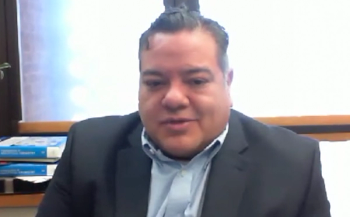
Serum Raman Spectroscopy and Convolutional Neural Network Enable Accurate Diagnoses of Gastric, Colon, Rectal, and Lung Cancers
Serum Raman spectroscopy combined with a convolutional neural network (CNN) offers a highly accurate and noninvasive method for diagnosing gastric, colon, rectal, and lung cancers paving the way for improved cancer screening and early detection.
Cancer continues to pose a significant threat to human health, emphasizing the need for effective and accessible screening methods. In a new study conducted by researchers from Beijing University of Posts and Telecommunications and The First Affiliated Hospital of Chongqing Medical University, a novel approach combining serum Raman spectroscopy with a one-dimensional convolutional neural network (1D-CNN) demonstrated promising results in diagnosing multiple types of cancer (1). The study, published in the journal Spectrochimica Acta Part A: Molecular and Biomolecular Spectroscopy, specifically focused on gastric cancer, colon cancer, rectal cancer, and lung cancer (1).
As an artificial neural network (ANN) designed for analyzing sequential data, the 1D-CNN model was best suitable for the analysis the researchers were conducting. A 1D-CNN leverages convolutional layers to obtain local patterns and features from input sequences (1). A sliding window technique, known as kernels, was deployed to scan the input sequences (1).It also helped generate feature maps that noted the important information researchers needed (1).
The researchers noted that using these feature maps was important because once fed into subsequent layers, they were used to make predictions and learn higher-level representations (1). 1D-CNNs can automatically learn and identify complex patterns and relationships in sequential data, making them a powerful tool for various applications requiring analysis of one-dimensional data by leveraging the hierarchical structure of convolutional layers (1).
The research team successfully trained a 1D-CNN model because they implemented a Raman spectra database that contained cancer samples and healthy controls (1). According to the study, the combination of serum Raman spectroscopy and the 1D-CNN model achieved a classification accuracy of 94.5% across the four cancer types, which is high (1). A benefit of using the 1D-CNN model was that it improved on existing diagnostic methods. It improved on the limitations of these existing practices, offering an approach that was nondestructive and inexpensive (1).
However, despite its ability in detecting and diagnosing cancer, the CNN model is still an enigma in the medical community. There is a limited understanding of the model’s underlying learning mechanisms (1). The researchers tried to visualize the features learned by the convolutional layers of the CNN model in an effort to show how it can be used to diagnose rectal cancer (1). The insight that this visualization process provided enhanced the interpretability and transparency of the diagnosis process (1).
When combined, serum Raman spectroscopy and the CNN model becomes an effective tool for distinguishing different types of cancer from healthy controls. This breakthrough technology can lead to revolutionizing cancer screening and diagnosis because it provides doctors and medical professionals with an alternative method that is quick, efficient, and inexpensive (1). By enabling early detection and accurate identification of cancer, this innovative method has the potential to significantly improve patient outcomes and contribute to the fight against this devastating disease. Although this study reveals the potential of the CNN model in diagnosing cancers, further research is needed to fully explore the clinical applicability of serum Raman spectroscopy combined with CNN models for cancer diagnosis in real-world scenarios (1).
Reference
(1) Du, Y.; Hu, L.; Wu, G.; Tang, Y.; Cai, X.; Yin, L.Diagnoses in multiple types of cancer based on serum Raman spectroscopy combined with a convolutional neural network: Gastric cancer, colon cancer, rectal cancer, lung cancer. Spectrochimica Acta Part A: Mol. Biomol. Spectrosc. 2023, 298, 122743. DOI:
Newsletter
Get essential updates on the latest spectroscopy technologies, regulatory standards, and best practices—subscribe today to Spectroscopy.




